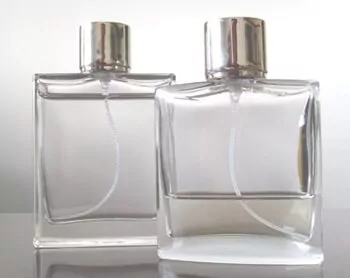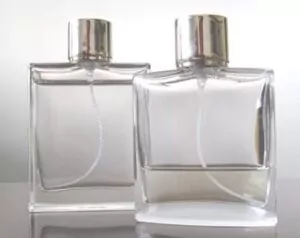Good Scent. Bad Reaction?

 A New Approach for Detecting Fragrance Allergens
A New Approach for Detecting Fragrance Allergens
Have you ever sat next to someone wearing heavy cologne and suddenly noticed that your eyes were watering?
Hopefully, you’ve never had that experience, but if you have (I actually have), then there’s a good possibility that you have had an allergic reaction to something in the perfume.
Why do I bring this up, you may wonder? Because as a consumer of Cosmetics and Personal Care (CPC) products, it’s actually quite simple to avoid allergenic fragrance ingredients, right? Just buy a fragrance-free product!
As with many things in life, the answer is not quite so simple. For example, what do you do if there are no fragrance-free options?
Scientists at Cosmetics & Personal Care companies actually ask themselves a similar question: How can we avoid using fragrance ingredients in our products that may cause allergic sensitivities?
Fragrance ingredients are frequently introduced into the product to impart an appealing aroma or to mask unpleasant odors of some of the ingredients. So avoiding potentially allergenic fragrance ingredients leaves CPC scientists with a rather tough analytical challenge.
To address this challenge, they often turn to lists of known fragrance allergens such as found in the EU Cosmetic Regulations (1223/2009) and then employ a methodology known for its ability to handle volatile components – gas chromatography. That’s usually how it’s done, but some scientists are starting to ask: “Can I test for allergens any faster?”
Why faster? Because a typical GC method for allergen analysis often requires two or three 45-minute analyses.
Growing weary of these protracted run times, several scientists from the CPC industry asked our scientists here at Waters that exact question and we looked into it. We found that there is a faster separation methodology based on a technology called Convergence Chromatography (i.e., it uses carbon dioxide as a mobile phase) and provides separation characteristics between that of liquid chromatography and gas chromatography (thus ideal for volatile fragrance ingredients). Convergence Chromatography is marketed by Waters as ACQUITY UPC2.
In our investigation of fragrance allergens, we were able to consolidate the 26 allergens from the EU Cosmetics Regulations (1223/2009) onto a single UPC2 method (combined with MS detection) that runs in less than 10 minutes.
If you want to see how the method works, check out our detailed application note.
[bctt tweet=”Fast Analysis of Allergens in #Fragrances & #Cosmetics with #UPC2 & #MassSpec https://bit.ly/2nk2n3U” username=”WatersCorp”]
So by developing unique technologies such as UPC2, Waters is helping the CPC industry to create new products that are not only innovative, but safer as well.
Additional resources:
Popular Topics
ACQUITY QDa (17) bioanalysis (11) biologics (14) biopharma (26) biopharmaceutical (36) biotherapeutics (17) case study (17) chromatography (14) data integrity (22) food analysis (12) HPLC (15) LC-MS (22) liquid chromatography (LC) (20) mass detection (16) mass spectrometry (MS) (54) method development (13) STEM (12) sustainability (12)



